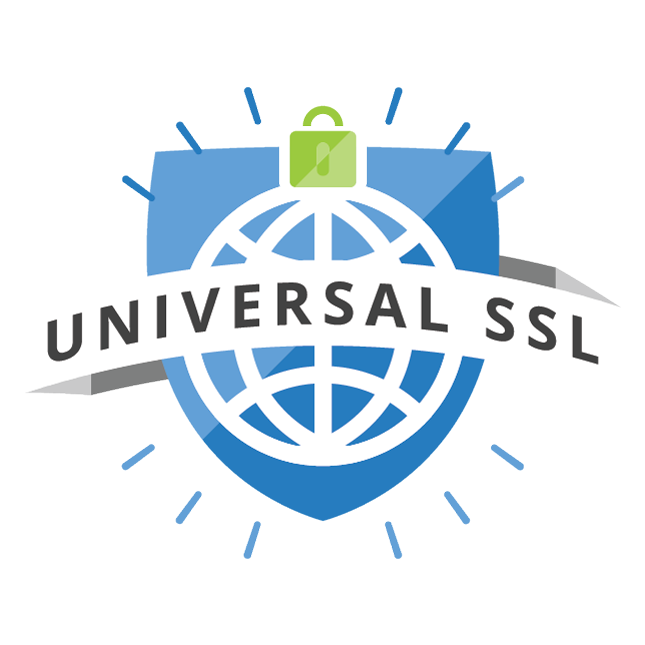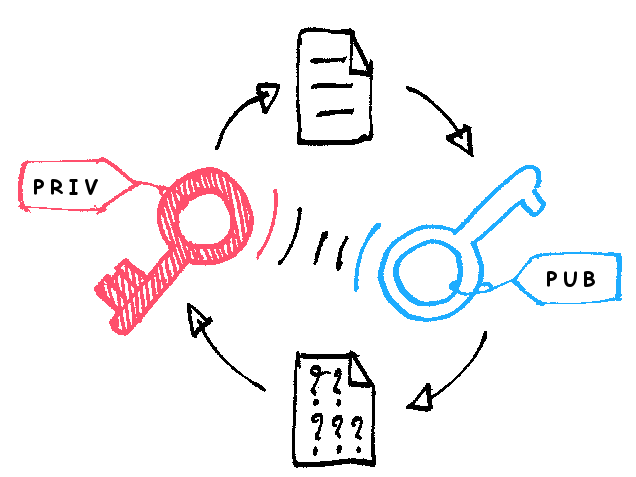
TLS Handshake connects two computers via encrypted connections. It begins when the server sends an encrypted message with the client's session keys, titled "Finished". After the Handshake is completed successfully, the server and client public private key pairs can begin exchanging encrypted messages. After the connection has been broken, the session keys will be removed from the server. The handshake process is then repeated when a Client Hello is sent.
QUIC's low latency handshake
QUIC uses the same basic principles as TLS, but adds a low-latency handshake. The clientHello message is the first part of the handshake. This message contains a cipher suite, the initial-max-data-transport parameter, and an address validation token. The client sends the message to the servers.
QUIC's low-latency-handshake TLS reduces the handshake time for web-like data transfers. Three round-trips are required for traditional TCP-like protocols. The new QUIC protocol eliminates two of them. QUIC permits multiple byte streams on the same connection. This approach is in line with streaming video's demands.
RSASSA-PSS signature schemes
The RSASSA–PSS handshake consists only of two components. Each one is unique. The first component is the cryptographic material. The encryption process is the second component. The RSA encryption algorithm powers the handshake. Both components encrypt and decrypt the message, with the client producing a digital signature.

The RSASSA-PSS signature system uses the RSAkey to sign data using a personal RSA key. The public RSA code of the other end of the communication can then verify the signature. This allows two different signatures to be applied to the same data. PKCS#1 v2.1 standardized RSASSA-PSS.
Perfect forward secrecy
Perfect Forward Secrecy is a popular security option that protects encrypted data from being stolen in future security incidents. Currently, almost all major browsers support this security feature. There are some websites that don't support this feature.
Perfect Forward Secrecy must be supported by TLSv1.2 servers and the appropriate cipher suites. This feature is achieved using a Diffie-Hellman key exchange (DHE). This technique provides each client with a unique session key for every communication session. This ensures the integrity of session keys.
Suites cipher
TLS (Transport Layer Security) is a protocol for secure communications. It protects messages with a cipher sequence. The server and client must agree on the cipher suite and both must support it. Also, handshake protocols can also be used with ciphersuites.
TLS defines the concept of a cipher sequence. TLS 1.2 has the most widespread use. The latest version, TLS 1.3, has additional requirements for cipher suites. TLS 1.3 was not widely used, even though it was recently standardised. Because of this, TLS 1.2 cipher suites do not work on TLS 1.3.

Round trips
Round trips with TLS handshake are security protocols that allow secure communications between two computers. TLS handshakes typically require two trips to establish the connection between clients. False Starting can reduce this. The client sends encrypted data to the server before the server replies. This allows the client reduce round trip times for new TLS connection.
TLS uses the two-way handshake technique to establish secure communication between client, server. These handshakes take about 250 milliseconds. If the server supports higher levels of encryption, the handshake process takes just one trip.
FAQ
How do I design a website.
Understanding your customers' needs is the first step. What are they looking for when they visit your site?
What problem might they face if your site doesn't have what they are looking for?
You now need to know how to fix the problems. Also, you need to ensure that your website looks professional. It should be simple to navigate and use.
Your website should be well-designed. It should not take too much time to load. If it takes too many seconds, people won’t be able stay as long. They'll leave and go elsewhere.
It is essential to determine where all your products reside before you start building an eCommerce website. Are they in one place? Or are they scattered around your site?
You must decide whether to sell one product only or many products simultaneously. Are you looking to sell one product or several?
You can start building your site when you've decided on these questions.
Now it is time to focus on the technical side. What will it take to make your site work? Will it run fast enough? Can people get to it quickly from their computers?
Will people be able to buy something without having to pay extra? Will they have to register with your company before they can buy something?
These are vital questions you need to ask. Once you know the answers to these questions, you'll be ready to move forward.
Do I require technical skills to design or build my website?
No. You only need to have a basic understanding of HTML/CSS. Tutorials that teach HTML and CSS can be easily found online.
How Much Does It Cost To Create An Ecommerce Website?
It depends on the platform you choose and whether you use a freelancer to build your site or hire a service provider. eCommerce websites start at about $1,000.
Once you choose a platform to use, you can expect a payment of anywhere from $500 to $10,000.
You won't spend more than $5,000 if you are using a template. This includes any customization you need to make to fit your brand.
Statistics
- Did you know videos can boost organic search traffic to your website by 157%? (wix.com)
- In fact, according to Color Matters, a signature color can boost brand recognition by 80%. There's a lot of psychology behind people's perception of color, so it's important to understand how it's used with your industry. (websitebuilderexpert.com)
- It enables you to sell your music directly on your website and keep 100% of the profits. (wix.com)
- The average website user will read about 20% of the text on any given page, so it's crucial to entice them with an appropriate vibe. (websitebuilderexpert.com)
- It's estimated that chatbots could reduce this by 30%. Gone are the days when chatbots were mere gimmicks – now, they're becoming ever more essential to customer-facing services. (websitebuilderexpert.com)
External Links
How To
How do I get started as a UI Designer?
There are two paths to becoming a UI design:
-
You can go through school and earn a degree in UI Design.
-
It is possible to start a freelance career.
To be able to enter school, it is necessary to attend college/university and complete four years. This includes business, psychology and computer science.
You can also enroll in classes at state universities or community colleges. Some schools offer free programs; others charge tuition fees.
After graduating, you'll need to find employment. If you plan to work for your own business, you need to establish a client base. It is essential to establish a professional network so other professionals know you exist.
You can also look for opportunities to intern at companies that specialize in developing web applications. Many companies employ interns to gain practical experience before hiring full time employees.
A portfolio will help you get more work once you have established it. Your work samples, as well details of the projects, should all be part of your portfolio.
It's a smart idea for you to send your portfolio by email to potential employers.
Being a freelancer means you need to market yourself. You can list your services on job boards such Assure, Guru, Freelance, Guru and Upwork.
Freelancers often receive assignments from recruiters who post openings online. These recruiters look for qualified candidates to fill specific positions.
These recruiters provide candidates with a project description that details the position's requirements.
While freelancers aren't required to sign contracts for a long time, they can still be paid. If you are looking to make a move, however, it is advisable to negotiate an upfront payment.
Designers prefer working directly with clients over working through agencies. Although this may seem appealing, many people lack necessary skills.
Agency workers often have extensive industry knowledge. They also have access to specialized training and resources that allow them to produce high-quality work.
These benefits are not the only ones. Agency workers typically receive a higher hourly wage.
One downside to working through an agency is the inability to have direct contact at work with the employer.
Being a successful UI designer requires you to be self-motivated, creative.
You must also possess excellent verbal and written communication skills.
UI designers are responsible in designing websites through the creation of user interfaces (UI), as well visual elements.
They are responsible for ensuring the site meets its users' needs.
This requires understanding what information visitors want and how the website should function.
Wireframes can also be created by UI developers using a variety o tools. Before they begin designing, wireframing allows them to visualize the page's layout.
It is easy to create your own wireframes using the online templates.
Some designers concentrate on UI design only, while others mix UI design with graphics design.
Photoshop is a tool used by graphic artists to edit images.
Then, they use Adobe InDesign for layout and page design.
Photographers capture images using digital cameras or DSLRs.
They then upload the images to a program for photo editing, where they add text captions and filters.
After taking the photo, the photographer saves it in a file format that is compatible with the website.
It is crucial to consider all aspects when designing a website.
This includes research, planning, wireframing, prototyping, testing, coding, content creation, and publishing.
Research - It's essential to conduct thorough research before starting a new project.
Planning - Once you've completed your research, you'll want to begin developing a plan.
Wireframing is a preliminary sketch for a web page, or application.
Prototyping – Prototypes are used to verify that the final product is consistent with the original vision.
Testing - It is important to test the prototype several times in order to make sure it works.
Coding - Coding refers to the process of writing computer code.
Content Creation: Content creation can include everything from copywriting to managing social media profiles.
Publishing means uploading files onto a server and making the site accessible.
You will learn about various projects as a freelance UX/UI designer.
Some companies, for example, only need wire frames. Others require complete prototypes.
Depending upon the type and scope of the project, you may be asked for specific tasks.
If you are hired to create wireframes for a company, you may be expected to produce several wireframes each time.
You may need to develop a functional version of the site if you are hired to build a prototype.
No matter what type of project you are working on, it is important to have good interpersonal skills.
You need to build strong relationships with potential employers as freelancers are hired primarily through referrals.
Additionally, communication skills are essential.
Portfolios are an essential part of any freelancer’s toolbox.
It showcases the quality of your work as well as your ability and willingness to provide high-quality results.
You can take care of this by creating a professional portfolio online.
The best way to get started is to find websites similar to yours.
Search these websites to view the details of each site.
Once you identify what you think are the best practices, go ahead and adopt them.
It's also helpful to include links to your portfolio within your resume.